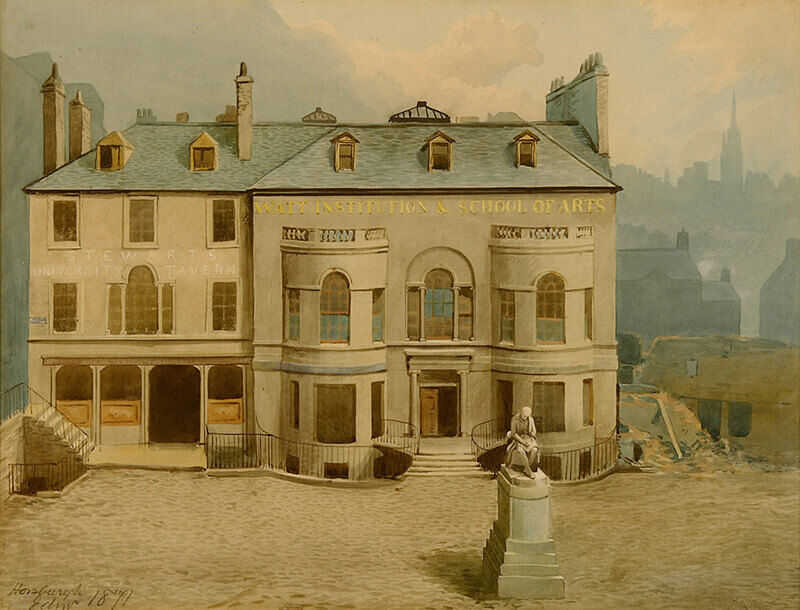Watt Institution and School of Arts

At first the new School taught only chemistry, natural philosophy (mechanics), architecture and farriery. It took another year for mathematics to be formally taught. Although most students were initially from poor backgrounds, some were also wealthy such as inventor of the steam hammer James Nasmyth, son of artist Alexander Naysmyth. The syllabus grew over the years to include English, French and drawing. In 1835 the first working class representatives joined the School's Board of Directors and in 1837 the School moved to new larger leased premises in Adam Square.
However, the School was in financial difficulty as donations were dwindling. As the work of the late engineer James Watt had been an inspiration to staff and students, a Subscription Fund was set up in his name to try and secure the future of the School. In 1851 enough revenue was generated to allow the purchase of Adam Square and in 1852 the name was changed to the Watt Institution and School of Arts.
The School continued to grow but there was one glaring omission - the students were all male. Pioneering campaigner Mary Burton led a successful campaign to admit women in 1869 and became the first woman on the School's Board of Directors and a Life Governor of Heriot-Watt College.